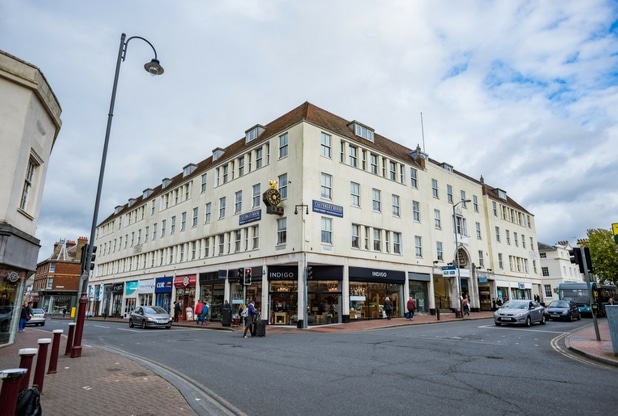The viability of Tunbridge Wells as a centre of business has been questioned in a report that shows hundreds of offices have closed since 2013 and been converted into residential accommodation.
Estate agency Durlings published findings last week which also showed many of the workplaces available are ‘woefully inadequate’ and could fail environmental tests.
The Borough Council commissioned the market review after concerns that relaxed Permitted Development rights had enabled landlords to easily convert office space into more profitable housing. The council is largely powerless to stop the change of use applications.
Durlings found that since the laws changed in May 2013 there has been a loss of 65,000 sq ft of office space, around 10.5 per cent of the then total 609,000. That is the equivalent of losing more than 320 average sized offices.
Craig Strong, of Capital Currencies, said his firm has been forced to move from Lonsdale Gardens to Calverley Road and then to the High Street because developers exercised a change of use.
“The report has said the office space is woefully inadequate and the situation is turning into a nightmare,” he said.
“I have suffered twice on the back of this and I am peeved. It does hit the SME [small and medium enterprise] market and has sucked the life and soul out of the town centre.
“We have a massive shortage of houses but if we destroy the centre of business you are not building around value, you just have a dormant satellite town.
“It is very sad. I have been here 15 years and watched the town deteriorate.”
A further 114,000 sq ft, equivalent to 570 offices, is also set to be lost if permitted development applications that have been logged are approved.
Added to this is the combined 82,000 sq ft of office space set to go when Vale House and Calverley House, currently home to AJ Bell, are redeveloped.
Durlings also noted that 19 per cent of current office space of 544,000 sq ft is occupied by AXA PPP across three large Tunbridge Wells buildings.
A researcher from the agency wrote: “The majority of the purpose built stock is between 25 to 40 years old and falls a long way short of the current BREEAM ratings one would expect.”
BREEAM ratings analyse the specification and sustainability of a building. Data shows an average rating of Tunbridge Wells office space would fall within the UK’s lowest 25 per cent.
The report showed that Bank House and Carriage House in Tunbridge Wells are also in danger of failing to meet the minimum energy efficiency standard of grade E by April, which is the government’s new legal requirement.
What can be done?
Durlings stated the aim of the study was to assist the council in ‘determining whether to use the legislative powers available to it to limit Permitted Development rights’.
The second aim was to ‘consider where there may be opportunities in the Town Centre to provide additional space, by change of use, or new development, to meet future requirements’.
The researcher wrote: “It is strongly recommended that Tunbridge Wells Borough Council considers implementing an Article 4 Direction [that would give the council more power] on the basis of the findings.
“Advice should be sought from a planning expert as to whether these findings would constitute the necessary ‘exceptional circumstances’ needed to impose the order.
“The only known potential opportunities open to the council to replace lost office space with new are: The new Civic Centre development, the redevelopment of the Town Hall and the development in the Vale Avenue Area of Change.
“The council should consider all other land and buildings in their control for office development, or short term office use, whether within or outside the study area.”
A council spokesperson said: “The council is extremely concerned about the loss of office space to residential dwellings.
“We strongly believe that local councils are best placed to determine where and how housing targets are met and to ensure that we balance housing growth with local jobs.”
Craig Strong added: “It is driving businesses away and it is having a knock on affect.
“I’m not sure why the council has undertaken this survey, it does seem a bit horse and bolt and a bit obvious.
“What is going to happen now? How are businesses going to be enticed back to town? Once businesses go, it is hard to get them to come back to town.”
‘Other towns are moving ahead’
The report also noted that 50 per cent of those working in Tunbridge Wells live in the borough but noted the ‘congested’ Pembury Road and the A26 as reasons why the town may be struggling to attract new business.
Combined available office space for Tunbridge Wells and Pembury was found to be 19,200 sq ft, a figure below Tonbridge [32,150] and Crowborough [41,150].
The researcher added: “Royal Tunbridge Wells now competes on a sub-regional basis with Kings Hill.”
Ron Roser, Chairman of Langton Business Services, commented: “It is a good report, the trouble with the planning is that it can become pendulous.
“Twenty-five years ago it was all about converting properties into office space, like Mount Ephraim, but now it is the other way. People are living in the town centre.
“My hope is for a middle ground.
“Demand for office space is now outstripping supply. My concern is how business and employment will be affected by this.
“It is now a probability that we will be overtaken by Kings Hill.”








